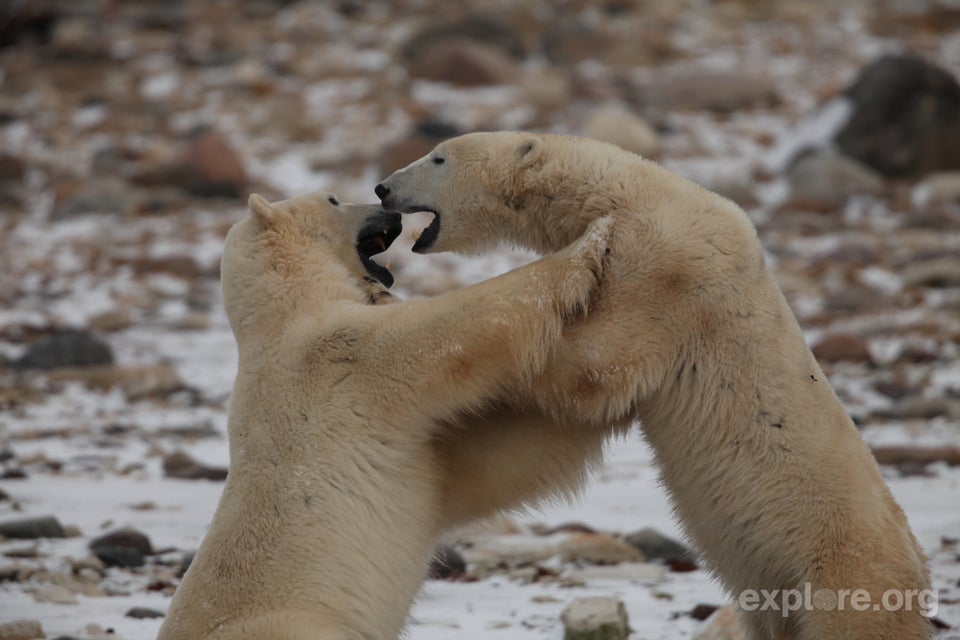
Every winter, I head to Alaska's North Slope in the bitter cold to set up cameras near polar bear den sites, with a goal of recording the family's behavior after they leave the den but before they return to the sea ice. Drifts of snow blanket the tundra at that time of year -- and hidden under that snow, mother polar bears snuggle with young cubs that are still too fragile to venture into the harsh arctic environment outside.
In a warming world, we who work with polar bears have been taking pains to measure their response to the rapidly diminishing polar ice cap habitat that has declined by more than half in the span of four decades. Polar bears must have ice to hunt their seal prey. As the ice diminishes, so do polar bear populations. As it disappears, so do they. We see the effects of a warming world manifest in many aspects of polar bears' life cycle from reduced numbers to shrinking body sizes, from smaller litters of cubs to altered movement patterns, and so on. Like a vet studying a sick animal, we see many problems in the world of polar bears today.
I've been privileged to study their denning ecology as part of a study for Polar Bears International, focusing on the time polar bear mothers spend entombed in snow as they bear their cubs, and have documented changes there as well; changes not good in the long run. For example, polar bears have been entering dens later and leaving them earlier than they did three decades ago. In fact, along Alaska's North Slope we are seeing polar bears spending an average of more than three weeks less in dens than previously. Because sea ice freeze-up is occurring later each year, polar bears must wait and this is reflected in the times that they finally enter dens in the fall. Mother bears and their cubs leaving dens earlier in the spring isn't due to snow melting. It is most likely due to the mothers being in such poor condition that they cannot wait longer in dens for their cubs to mature, but have to leave or risk dying in the den. So they leave earlier than they otherwise would, thus exposing cubs to the harsh arctic environment before they are ready. Ultimately this will cost cubs' lives.
Because sea ice is shrinking in both extent and thickness, bears that once denned on the ice now head for land where dens are more stable and safer for their cubs. A recent USGS study showed that the majority of bears now head for land, the opposite of what was the case three decades ago. This means that pregnant mothers must go much farther before they can den up, and they must go much farther than before to return to the sea ice and resume hunting seals. This lengthy migration costs them yet more precious calories and ultimately can make the difference between living and dying.
Just as your vet knows what is best for your pet, bear biologists know what the solution is for polar bears: stop habitat loss. This can only be done by lowering the earth's temperature so that sea ice can provide polar bears the ice habitat they need, both in extent and thickness. If melting continues as currently projected, the future is not bright for this species. Let's hope we can find the resolve to reverse this trend for this beautiful fellow citizen of Planet Earth before it is too late.
Courtesy of explore.org.
